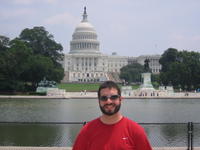Political economy and trade
International political economy is an important and highly relevant subfield within the study of international politics. It emphasizes that domestic politics and economics have vital roles in shaping a state’s foreign policy, and several IR theorists choose to discuss states' international behavior in terms of political economy and trade. Two theorists in particular, Ronald Rogowski and John A.C. Conybeare, will be discussed below.
When taking an economic perspective, international trade behavior is traced to domestic political coalitions and vice versa in order to predict why states are free trade oriented (cooperative and in pursuit of absolute gains) or protectionist (free-riding and in pursuit of relative gains). Exogenously introduced rules or changes to the terms of trade between states affect actor preferences in predictable patterns that Rogowski and Conybeare depict graphically or through scenario building and game theoretic models.
Rogowski describes how domestic coalitions form and influence the trade policy of a state based on the scarcity or abundance of land, labor, and capital. He hypothesizes that class-based or urban/rural cleavages result from unequal distributions of these factors, and governments must act as entrepreneurs to strike a balance between the opposing forces on each side of the cleavage. Different state behaviors (namely, government policies regarding free trade or protectionism) result as governments attempt to maintain their domestic support and legitimacy.
Conflicts of domestic economic interests must be overcome in order to foster free trade, which is purported by economists to be the best path to national economic growth. However, achieving a policy of free trade obviously represents a problem of cooperation and collective action among domestic self-interested parties, an environment and dilemma extremely similar to the problems of anarchy and self help hypothesized by IR theory!
In his book, Trade Wars, John A.C. Conybeare produces a variety of graphical representations for the dilemmas of international trade. He sees trade not as a collective good, but as a "club good" that can be exclusive in nature. In turn, Conybeare depicts the interactions between states during trade as game-theoretic models where iterated games can demonstrate the probability of progress towards free trade. Because Conybeare believes that trade relationships are inherently unstable, he uses the Prisoner’s Dilemma, Stag Hunt, and Chicken in his models.
Conybeare concludes that states are income maximizers and that large states are able to use "optimal tariffs" to victimize small states. His models for economic behavior, as well as the arguments of Rogowski, take their form from IR theory and its insights into state behavior, but they also serve to create a fuller explanation of state behavior that is more useful for theorists and practitioners alike.
When taking an economic perspective, international trade behavior is traced to domestic political coalitions and vice versa in order to predict why states are free trade oriented (cooperative and in pursuit of absolute gains) or protectionist (free-riding and in pursuit of relative gains). Exogenously introduced rules or changes to the terms of trade between states affect actor preferences in predictable patterns that Rogowski and Conybeare depict graphically or through scenario building and game theoretic models.
Rogowski describes how domestic coalitions form and influence the trade policy of a state based on the scarcity or abundance of land, labor, and capital. He hypothesizes that class-based or urban/rural cleavages result from unequal distributions of these factors, and governments must act as entrepreneurs to strike a balance between the opposing forces on each side of the cleavage. Different state behaviors (namely, government policies regarding free trade or protectionism) result as governments attempt to maintain their domestic support and legitimacy.
Conflicts of domestic economic interests must be overcome in order to foster free trade, which is purported by economists to be the best path to national economic growth. However, achieving a policy of free trade obviously represents a problem of cooperation and collective action among domestic self-interested parties, an environment and dilemma extremely similar to the problems of anarchy and self help hypothesized by IR theory!
In his book, Trade Wars, John A.C. Conybeare produces a variety of graphical representations for the dilemmas of international trade. He sees trade not as a collective good, but as a "club good" that can be exclusive in nature. In turn, Conybeare depicts the interactions between states during trade as game-theoretic models where iterated games can demonstrate the probability of progress towards free trade. Because Conybeare believes that trade relationships are inherently unstable, he uses the Prisoner’s Dilemma, Stag Hunt, and Chicken in his models.
Conybeare concludes that states are income maximizers and that large states are able to use "optimal tariffs" to victimize small states. His models for economic behavior, as well as the arguments of Rogowski, take their form from IR theory and its insights into state behavior, but they also serve to create a fuller explanation of state behavior that is more useful for theorists and practitioners alike.


